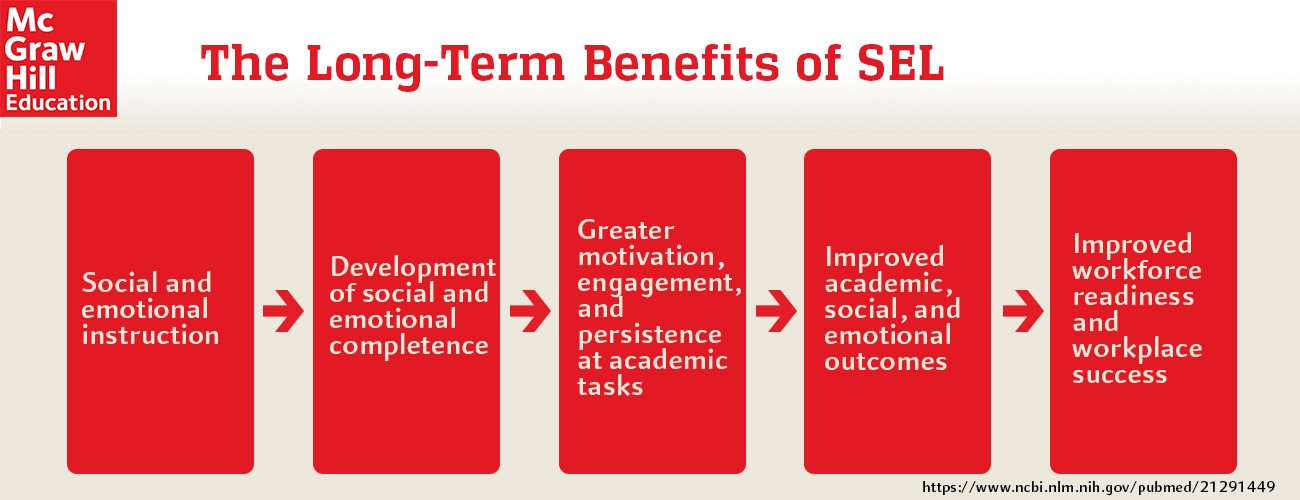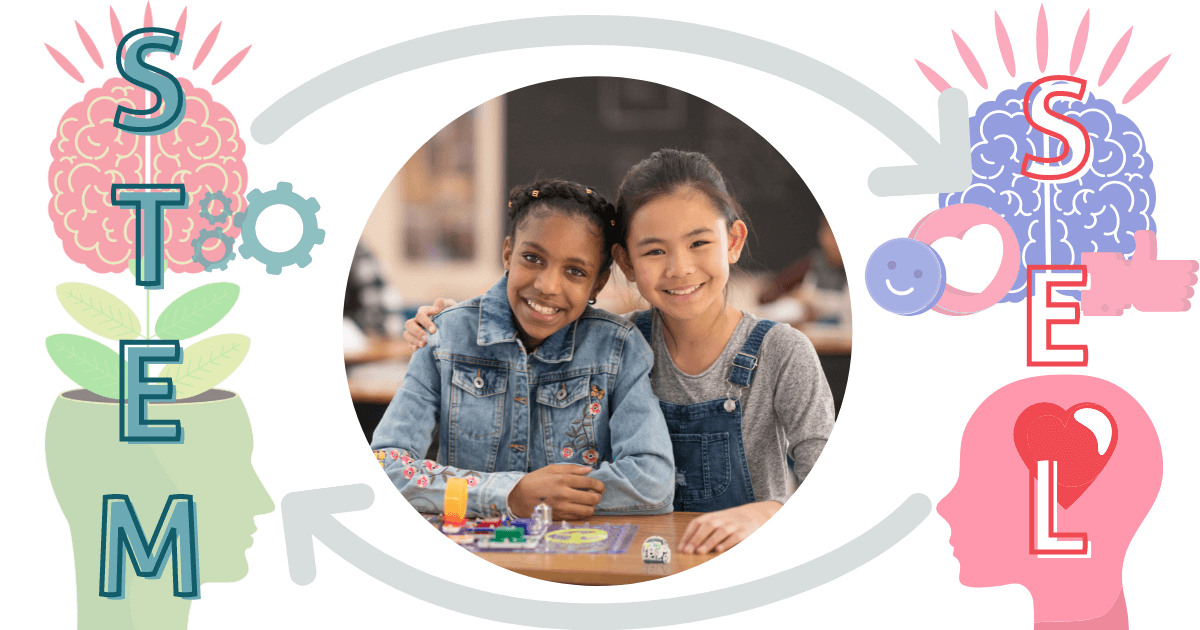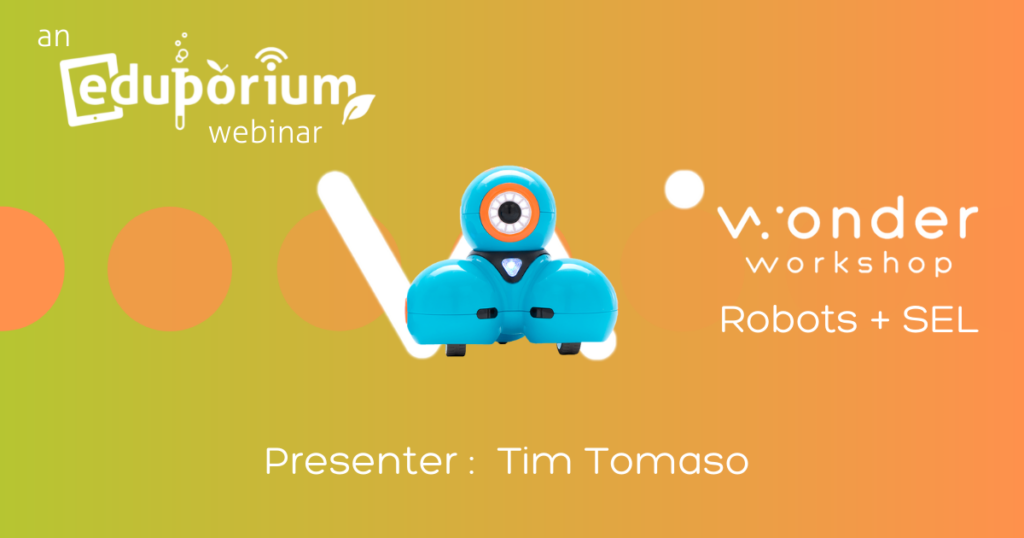- SEL and STEM have a uniquely beneficial and unified relationship.
Robotics is one area of STEM in which SEL is particularly valuable.
- In STEM education, collaborative learning opens up SEL opportunities.
- Teachers can look to facilitate student collaboration as much as possible.
- With or without technology, SEL experiences are worthwhile and necessary.
It’s no secret that computer science is one of the most fruitful industries today. This has created increased demand for teaching students STEM skills they will need for that world. Another area of education that CS often collides with, however, is social and emotional learning. You might assume this connection is a bit off, but there are many ways in which STEM and SEL are related. Starting with teaching skills like creative problem solving and persistence, merging these two elements of education can really help kids learn how to embrace the productive struggle they’ll likely face in our tech-driven world. So, let's discuss how K–12 educators can combine SEL and EdTech to help students grow into well-rounded problem solvers.
Combining STEM and Social-Emotional Learning
Since there's such a huge focus on technology these days, children tend to use it essentially from the time they are born. This use continues through school because educators want to make sure they have the tech skills they will need in the future, but spending so much time on devices can come at a cost. We also know this can—in rare cases—be detrimental for health, including causing vision issues, headaches, and various other ailments. Constantly immersing themselves in devices also hurts key social-emotional developments in childhood. And, in some cases, kids could start out with lower proficiency levels in the most important soft skills, like communication, recognizing and interpreting emotions, and resolving conflicts. So, though they may be learning some SEL and tech skills, they aren't always fully developing without soft skill growth.
Connections between STEM activities and SEL.
To correct this, educators can start by giving students the right tools with which to learn and try activities that foster both social-emotional and STEM connections. Some technologies, including those for learning computer science skills, actually help kids boost social-emotional development simultaneously. This also includes encouraging collaboration and helping students learn how to rework problem-solving approaches as often as they need to. Working with computer science software also gives students some opportunities to manage this process. From the time they begin writing programs to the moment they see it run, they are in control. And, that’s something that a lot of students benefit from. Coding also helps them communicate their emotions at times, illustrate what they’re thinking, and even improve behavior.
Key STEM concepts students learn when coding.
CS tools help kids learn about and practice logical progressions, loops, if-then statements, and more. While these are all computer science concepts, they have ties to SEL and STEAM as well. When students successfully program something, they connect with their work and often express satisfaction when they do well. When they focus on coding tasks, students can also direct their full attention to the challenge at hand. Also, if they ever have trouble focusing within other areas, this could help them a lot. When teaching loops, specifically, students can learn about how their own actions might continue to affect others in a positive or negative way—continuing without end just like a loop does in coding. By relating these two concepts, kids can better grasp the commonalities and enhance their SEL skills while learning about computer science.
Integrating SEL and STEM Education
With the amount of STEM jobs already existing and continuing to emerge, students know that they'll need various technical skills. As this continues to shake out, however, we've seen that it’s not just technical skills students learn through SEL and STEAM activities that will help them. Far too often, gaps emerge over time when students focus solely on bolstering their technological skills. This can potentially hinder their soft skill development—particularly those social and emotional skills. Since the two are related, however, educators have found creative ways to merge them, including with classroom robotics tools. SEL and STEM remain two of the fastest growing areas in education with teachers and professionals agreeing on each one's vast importance. Though they’re both crucial separately, they’re now starting to really complement each other.
Introducing SEL from an early age.
In order for STEM and SEL to become second nature for students, it’s key that they have experiences with both of these from an early age. Studies show that, the earlier you introduce kids to something, the greater impact it has on them throughout their life. In fact, it’s the youngest students—those in Pre-K, kindergarten, first, and second grade—who are often most positively impacted by STEM and SEL experiences. Creating hands-on opportunities helps teachers take advantage of the overflow of curiosity these students have. It also helps them see that they can build things, design solutions, and work together despite their age. And, hands-on experimentation helps them develop empathy when working together in the school community.
Using SEL and STEM in whole-child learning.
Connecting STEM with social-emotional learning and teaching both STEM skills and concepts provides increased value for students. In pairing them, this presents a major opportunity for educators to add new and innovative elements to their instruction—and benefit students in various ways. Educators can weave key elements of SEL development into lessons within almost any curricular subject. They could also use these experiences to promote students developing character traits. Plus, since STEAM learning is largely hands-on, they could have students focus on skills like collaboration, creativity, curiosity, and community. Separately, these two branches of education are valuable but, when paired, they take things up a notch.
Using Robotics Tools to Foster SEL Skills
So, we know that classroom robotics tools can help students at every grade level learn computer science skills and utilizing a robotics progression model helps meet students where they are. We also know that a strong computer science foundation will be key in the future. When utilizing robotics in education, however, (specifically in early education), teachers can teach more than just coding. Since robotics tools often help foster collaboration, students can build teamwork skills as they learn and grow together. This helps boost their social-emotional profiles and problem-solving skills simultaneously. While we're unsure exactly what the future workforce will hold, we know technology will greatly impact it. And, while exposing students to tech is one piece of the puzzle, SEL and robotics education allows for additional development, too.
Building STEM skills and SEL skills together.
Learning with robotics tools (or any technologies) is more about what students can do with it to show they understand key concepts rather than the device itself. EdTech tools help students recognize patterns, work together, communicate thoughts, and creatively solve problems—all of which comprise the computational thinking process and include sprinkles of SEL development. Essentially, the soft skills side helps students develop key foundational skills—albeit in a roundabout way. As for social-emotional skills, robotics tools help them learn to work together from a young age. Educators can use robotics to teach the importance of sharing, turn taking, selflessness, and group work. Since students typically work in groups of 2-4, it's a fine opportunity to teach the importance of a team environment.
How students develop key skills using tech tools.
Learning with robotics also helps students test out various problem-solving approaches, which contributes to social-emotional intelligence. Why is this? When children get frustrated with their project or assignment, their natural reaction is to show that emotion and give up. Using their projects to show them that there are many ways to achieve goals, however, helps with their social-emotional and academic development. Also, when students struggle with coding, they must communicate with each other and work on team-building skills in the process. Teaching with robotics helps students develop both the soft skills and the computer science skills. Since they'll ultimately be combining them if they pursue a computer science career, what better place is there to start?
Beginner Tips for Bringing STEM and SEL Together
As we all know, STEM includes some of the most exciting subjects (science, technology, engineering, and math) and SEL helps teachers and students focus on emotional development. While students can still learn SEL skills through hands-on experiences, it’s helpful to think of STEM as the hands-on piece and SEL as the minds-on portion. Social-emotional learning also involves a much greater focus on collective soft skills development. As we already know, much of that focus is on building relationships, communicating feelings, and working collaboratively. Plus, there are plenty of educators who consider STEM and SEL compatible in every situation. After all, both provide students with important growth and, perhaps more importantly, they can work on soft skills in a safe, hands-on environment when mixing in STEM.
Building SEL skills through STEM learning.
On one hand, STEM experiences help students develop hard skills and the mindset for solving challenges. They also help them to see that perseverance is key in problem solving since their initial approaches might not work. And, what is perseverance? An important soft skill that ties in to social-emotional strength. When students understand that we all fail at times but that we can learn from mistakes and understand how to do things better, they’re building up their character. And, that’s another nod to SEL. Completing various STEM assignments also helps students build up confidence, which is crucial in many STEM professions. Feeling like they’re equal and that they belong (SEL) can also help convince students to pursue interests in STEM.
Connecting STEM and SEL to the workforce.
The current workforce is built, in large part, on employees utilizing a combination of STEM and SEL skills. Educators can use this to help students develop competencies in both areas with some simple strategies for doing so. The first is focusing on being more of a learning facilitator rather than a reciter of information. This gives children the opportunity to be more active and put STEM and SEL concepts into action. Next is rewarding children for their efforts by providing positive reinforcement and regular feedback—opening up back-and-forth conversations. And, finally, working in small groups truly helps students foster collaboration skills. So, though it's nothing out of the ordinary, these simple tips can help students stay on the right track in developing their STEM and SEL skills.

With Technology Or Not, SEL is Important
Academic achievements and technical skills are no longer the only indicators of success in today’s world. Employers are constantly looking for people with strong soft skills, including the ability to collaborate, think critically, demonstrate ethical responsibility, and communicate effectively. This group of skills—the crucially important soft skills and their ties to a successful career—are one reason why educational leaders are now putting so much effort into social-emotional learning. They also want all students to preserve their mental health and know how to ask for help. In any case, SEL skills are paramount and, oftentimes, the best way to develop them is through explicit instruction.
Relating SEL to academics.
Putting a focus on teaching social-emotional skills actually increases academic engagement a lot of times. It can also help curb bullying and school suspensions, research shows. With a solid SEL foundation that's formed in their earlier years, kids often grow into even keeled adults. This includes experiencing enhanced mental health, greater success in higher education, or higher income levels. Teaching SEL to kids helps in a number of ways, including those in the image above. SEL experiences could help motivate students, help them learn persistence, help them learn how to foster relationships, and, ultimately, better prepare them for different aspects of the workforce. It can also set them up for success.
Shooting for success in SEL programs.
Though they're now more common, SEL programs aren’t always formal due to a lack of resources and no clear ways of measuring success. This has led to instances of only basic SEL instruction, like anti-bullying classes or afterschool workshops, which isn’t necessarily ideal since SEL involves so much more than that. Technology, however, can help close this gap and allow educators to include SEL in the regular school day. It can also help them supplement SEL instruction and even alleviate some of the delivery obstacles. Online platforms, including game-based solutions, can help clarify core aspects of SEL, too, like communication, decision-making, positive collaboration, and more. When accessible, technology helps boost engagement, confidence, and personalization, which is why the relationship between tech and SEL has evolved.
For the latest EdTech, STEM, SEL, and 21st century education news, follow us on Twitter and Instagram. Like us on Facebook, too, or sign up for our newsletter to see our latest product additions and offerings. If you have questions about SEL in education, send us a message on social media or get in touch here.
| Contact the Eduporium team to learn more about strategies and educational technology products for connecting STEM and SEL. |





21 Comments